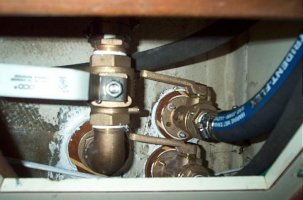Rob, I think we are all still trying to figure this out. Maybe someone more knowledgable will chime in to provide some answers. All the books seem to say that whenever a hose originates below the waterline, for either intake or discharge, it needs to be looped and vented. I understand your concern that this would interfere with suction of the pump; I have similarly wondered if this wouldn't lead to leaking out of the vent hole, even if the pump were strong enough to overcome the vent leak.
In the meantime, I think it makes sense to keep seacocks closed whenever reasonably possible, and to monitor regularly when they are open. But even so, one hears of boats sinking; in my own case, my head/toilet overflowed due to siphoning and a faulty valve in the head intake--fortunately I returned to the boat before it caused any damage, but I did have a full head and two inches of water on the floor in the head, ready to spill over the sill into the main cabin (after only being away two hours).
It's because of this experience, and wanting to ensure that I have taken all reasonable precautions, that I am interested in this issue.
Frank.

